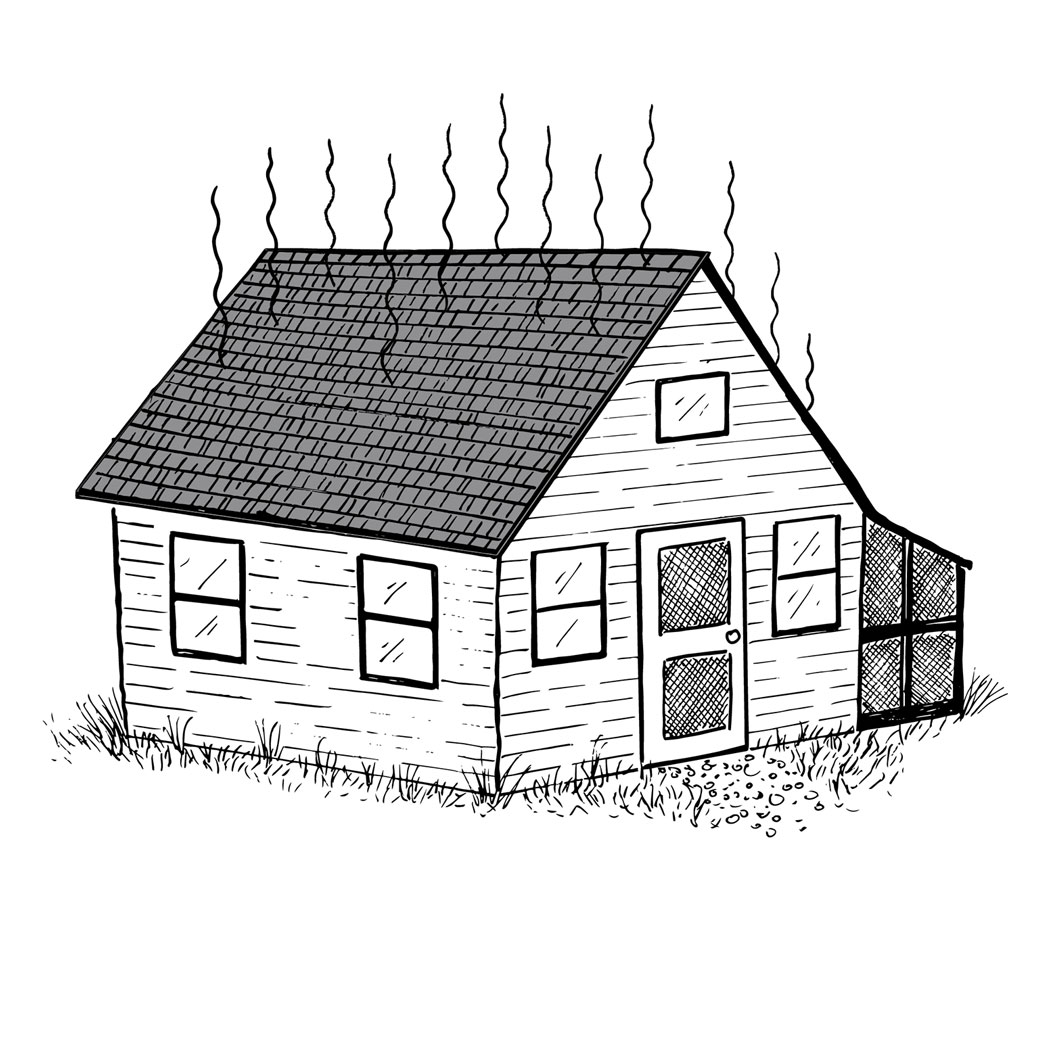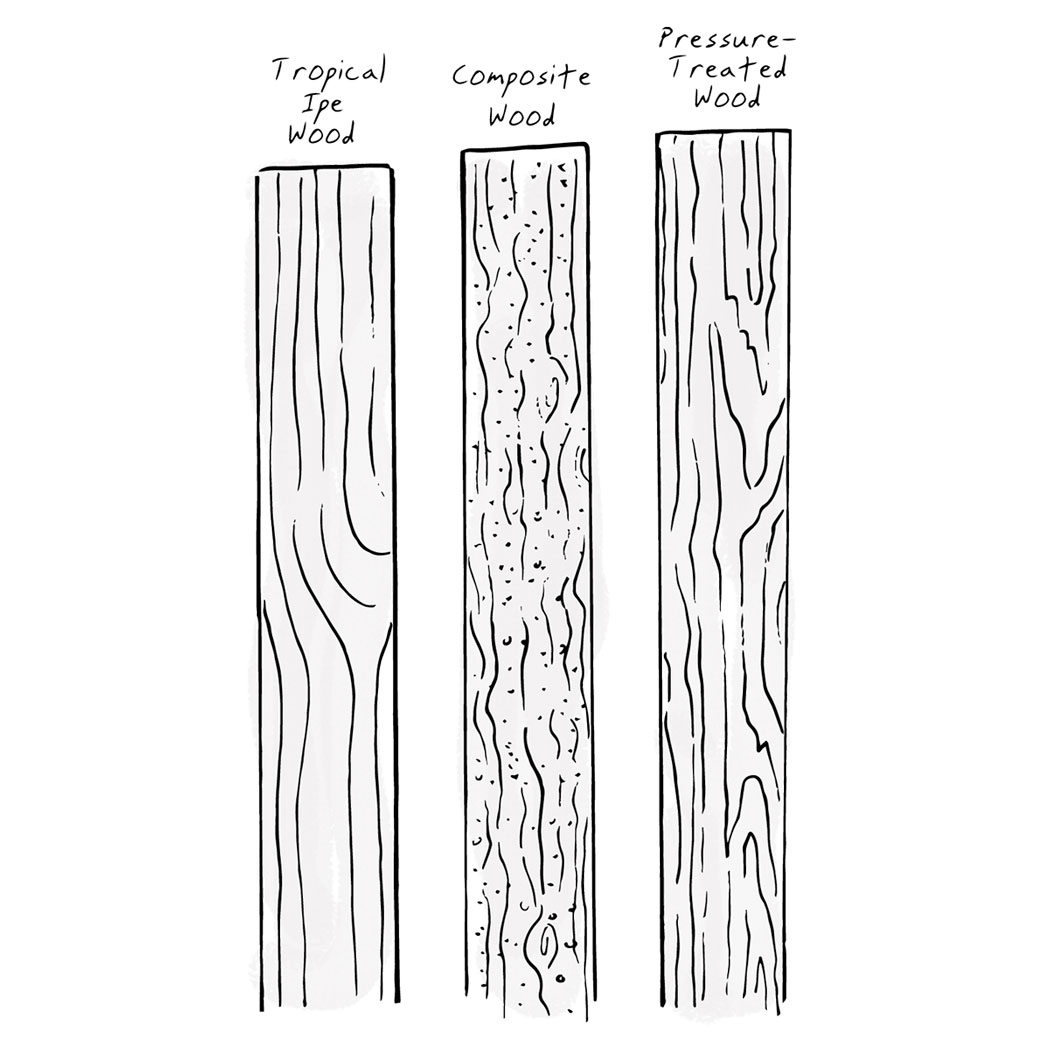
Home Rx
Realtor/science writer/self-proclaimed “house geek” Hannah Holmes on home buying during a pandemic, oak trees’ survivalist instincts, and more
Illustrations by Christine Mitchell Adams
Have a question for Hannah?
Send your Maine home or garden conundrum to hannah@mainehomes.com and we may feature it in an upcoming column.
What is the best way to ventilate an uninsulated summer camp? It’s sweltering inside and cooler out.
PAM RUSSELL, CUMBERLAND

Before we consider the sources of heat, I’ll pose an additional question: Why, oh why, do we make roof shingles black? This color triumphs over all the others at converting sunlight into sun-heat. Yet we spread it across the tops of our houses, where it can absorb an uninterrupted blast of sunbeams. Those beams, once turned to heat, will then radiate into the roof sheathing and the camp below. Long after the sun sets, the roof will still be pumping the day’s ray harvest into every object in the camp.
Insulating just the roof will make a difference, as will lighter-colored shingles, shading the camp with fast-growing trees, and covering windows with white blinds or curtains.
If you’ve already tried those fixes, hunt for other heat sources. An old “camp fridge” that runs all day will pump substantial heat into a room. A water heater can shed heat too, if poorly insulated. Using an oven in a camp is just asking for a sweaty night’s sleep, and boiling water without a lid on the pot will produce a Floridian humidity that amplifies heat.
Getting rid of all this soaked-in, radiating heat is a very slow process. Prevention is where the fun is.
Advertisement
What are the best decking materials for houses that are close to the ocean?
JENNIFER KOVICH, FREEPORT

Who better to ask than the guy responsible for docks and decks spread across the five local marinas belonging to Port Harbor Marine? Director of operations Michael Soucy says the three primary coastal options have both budgetary and aesthetic differences.
Tropical ipe wood is pricey, but long-lived. And while it will fade quickly from red to gray, you can preserve the color with an annual application of a stain offering UV protection. “When you first put it in, it’s beautiful,” Soucy says. “It looks like a piece of furniture.” (Import regulations mean most woods sold in the U.S. are sustainably harvested.)
Next up is “composite decking,” formerly known as plastic lumber, which it resembles. Early generations of these wood-and-plastic products got a reputation for warping and molding. But they’ve matured beautifully. Soucy uses them, and has no such issues. In terms of cost and lifespan, they’re the middle way.
The cheapest option is pressure-treated wood. It is probably the shortest-lived, as well, Soucy says. It’s no longer made with toxic arsenic, but retains the queasy green of its copper preservative. Bear in mind that it should season in place for three to twelve months (depending on whom you ask) before you stain it.
Our neighbors told us a rough winter is ahead when there’s an overabundance of acorns in the summer/fall and, believe me, there is an absurd overabundance! Are they pulling our legs?
JUDY POVINELLI BARNHART, SANFORD

As predictions go, it’s a solid bet that the coming Maine winter will be “rough.” But acorns are better at describing the past than the future — except when it comes to Lyme disease.
The reason oak trees coordinate their bonanza years is to thwart the seed stealers. The neighborhood oaks will noodle along for a few years shedding a meager spread of acorns. Mice, squirrels, woodpeckers, and other small acorn eaters will devour most of them. Then, synchronizing their watches by the weather, (exactly what weather isn’t clear, but precipitation in the past year seems central), the oaks will throw down a storm of acorns that will not just glut the seed stealers but perhaps even concuss many of them. A few lucky acorns will roll free of the orgy to sprout in peace. Thus, a new generation of oaks is born.
The fortune-telling feature of these windfall years is that they presage a baby boom among well-fed mice and squirrels. Where mice do well, deer ticks do well. And it is deer ticks that transfer the Lyme spirochete from mice to deer and people.
Advertisement
How is the real estate market dealing with the coronavirus? Are sales still happening?
DAWN GODDARD, PORTLAND

Home sales are waddling forward about as gracefully as you’d expect, given that all parties are wearing masks, gloves, and floppy shoe covers, and trying to stay 10 feet apart. Sometimes the masks are repurposed T-shirts. Sometimes the shoe covers are plastic freezer bags. I had a closing recently where four sellers (siblings) and two buyers isolated themselves in a total of five different vehicles in a parking lot, while the settlement agent played car-hop. Necessity is the mother of invention.
The goal is to keep human traffic through a home to a minimum. Initial “showings” are now done by video. Only “primary decision makers” visit prospective properties. Sellers who can manage the logistics often move out prior to listing their home. And it’s working: Property is transferring carefully and methodically from one owner to the next.
Agents really miss hanging out with our clients. But we ladies are saving a fortune on lipstick.
Hannah Holmes is a real estate broker at Keller Williams Realty Greater Portland and the author of four science titles, including The Secret Life of Dust and Suburban Safari. A veteran renovator of old houses, she blogs about humans and their territorial issues at geekrealtyblog.com.




